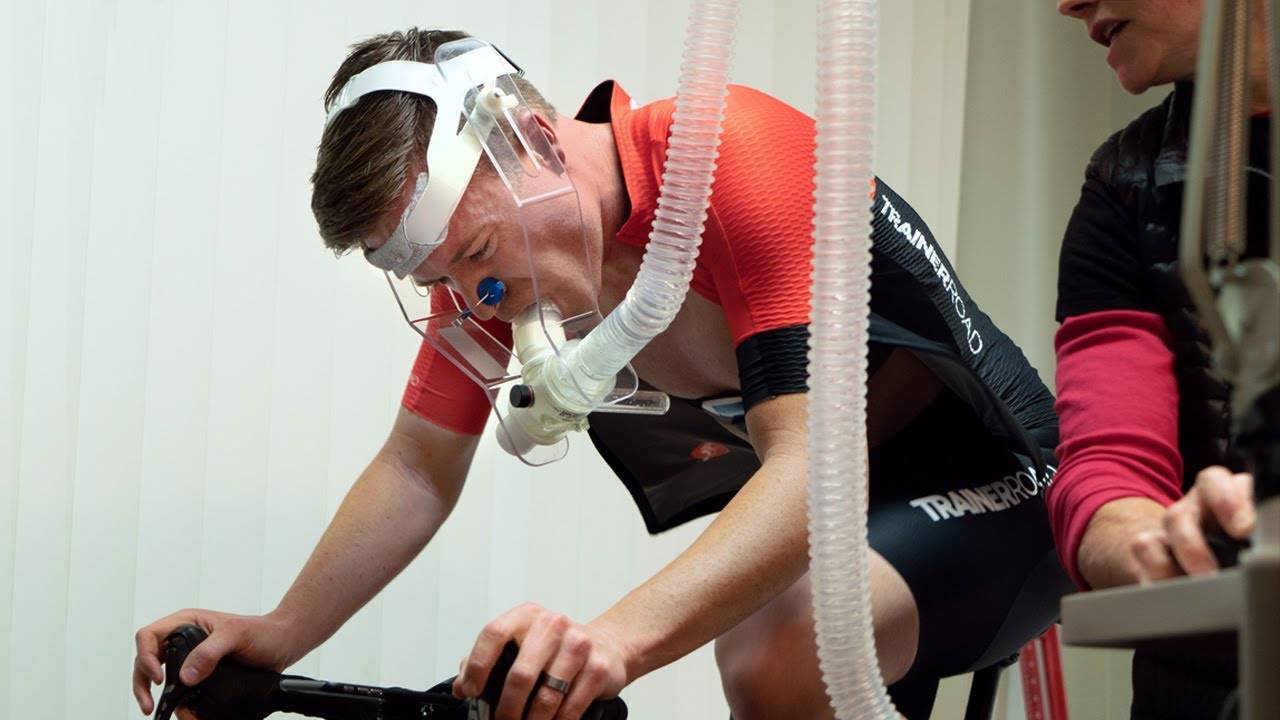Home>Misc>Featured>How Often To Do Vo2 Max Interval Training


Featured
How Often To Do Vo2 Max Interval Training
Modified: January 2, 2024
Discover the optimal frequency for performing Vo2 max interval training with our featured guide. Enhance your fitness with expert tips and maximize your results.
Introduction
Welcome to the world of VO2 Max Interval Training! If you’re looking for a way to take your fitness routine to the next level, this high-intensity training method might just be the answer. VO2 Max Interval Training is a technique used by athletes and fitness enthusiasts to improve their aerobic capacity and overall endurance.
VO2 Max, or maximum oxygen consumption, is a measure of the amount of oxygen your body can utilize during intense exercise. The higher your VO2 Max, the more oxygen your muscles can take in and use, leading to improved performance and endurance. VO2 Max Interval Training involves alternating between high-intensity bursts of exercise and recovery periods. This type of training pushes your body to its limits, ultimately increasing your VO2 Max and helping you become a more efficient athlete.
But why should you consider incorporating VO2 Max Interval Training into your fitness routine? The benefits are numerous. Not only does it improve your cardiovascular endurance, but it also increases your overall stamina, enhances fat burning, and boosts your anaerobic threshold. This means you’ll be able to sustain higher levels of intensity for longer periods of time, improving both your performance and results.
Before diving into VO2 Max Interval Training, there are a few factors to consider. Firstly, it’s important to have a solid fitness foundation and be free from any pre-existing medical conditions that may limit your ability to perform intense exercise. Consulting with a healthcare professional or fitness trainer is a wise step to ensure you’re physically ready for this type of training.
Now, the big question: how often should you do VO2 Max Interval Training? The frequency of your sessions will depend on various factors, including your current fitness level, training goals, and the intensity of your workouts. In the next section, we’ll delve into this topic in more detail, providing you with some guidelines and tips to optimize your VO2 Max training regimen.
What is VO2 Max Interval Training?
VO2 Max Interval Training is a form of high-intensity interval training (HIIT) designed to improve your aerobic capacity and overall endurance. It involves alternating between short bursts of intense exercise and recovery periods. The goal is to challenge your cardiovascular system and push your body to its limits, ultimately increasing your VO2 Max.
VO2 Max, or maximum oxygen consumption, is a measure of the amount of oxygen your body can utilize during intense exercise. It is considered one of the best indicators of cardiovascular fitness and endurance. By improving your VO2 Max, you enhance your body’s ability to transport and utilize oxygen, leading to improved athletic performance.
During VO2 Max Interval Training, you perform exercises at an intensity that brings your heart rate to around 80-90% of your maximum heart rate. This high-intensity period is followed by a brief recovery period at a lower intensity to allow your heart rate to drop. This cycle is repeated several times during a training session.
The exact duration and intensity of the intervals may vary depending on your fitness level and goals, but a typical VO2 Max Interval Training session could involve 30 seconds to 2 minutes of intense exercise, followed by 30 seconds to 2 minutes of active recovery or complete rest.
This type of training places a significant demand on your cardiovascular system and muscles. It challenges your aerobic and anaerobic energy systems, helping you develop a higher tolerance for lactic acid build-up and improve your overall endurance.
VO2 Max Interval Training can be performed with various exercises, such as running, cycling, swimming, or even using cardio machines like the elliptical or rowing machine. The key is to choose exercises that engage large muscle groups and allow you to maintain a high level of intensity.
It’s worth noting that VO2 Max Interval Training is a demanding form of exercise and should be approached gradually. It’s recommended to build a solid fitness foundation and gradually increase the intensity and duration of your intervals over time.
Now that we understand what VO2 Max Interval Training entails, let’s explore the numerous benefits it offers.
Benefits of VO2 Max Interval Training
VO2 Max Interval Training offers a range of benefits that can greatly enhance your fitness and athletic performance. Let’s explore some of the key advantages of incorporating this training method into your routine.
- Improved Cardiovascular Endurance: The primary benefit of VO2 Max Interval Training is an increase in cardiovascular endurance. By pushing your heart and lungs to work harder during intense exercise, you stimulate adaptations that improve your body’s ability to deliver oxygen to your muscles. This results in enhanced endurance and the ability to sustain higher levels of intensity for longer periods.
- Enhanced Anaerobic Threshold: VO2 Max Interval Training also helps improve your anaerobic threshold, which is the point at which your body switches from primarily using oxygen to relying on anaerobic energy systems. By regularly training near your maximum heart rate, you challenge your body’s ability to efficiently process lactic acid and delay fatigue. This translates to being able to push harder and maintain a high intensity for longer durations.
- Increased VO2 Max: As the name suggests, VO2 Max Interval Training aims to increase your VO2 Max. By regularly pushing your aerobic capacity to its limits, you stimulate the adaptations necessary for your body to utilize oxygen more efficiently. This improvement in oxygen utilization leads to a higher VO2 Max, allowing you to perform at a higher intensity and for a longer duration.
- Accelerated Fat Burning: VO2 Max Interval Training is highly effective at burning calories and fat. The high-intensity intervals elevate your heart rate and metabolism, leading to increased calorie expenditure during the workout. Additionally, the intensity of the training stimulates the production of growth hormone, which can promote fat burning even after the workout is complete.
- Time Efficiency: One of the major advantages of VO2 Max Interval Training is its time-efficiency. Due to the high-intensity nature of the intervals, you can achieve significant cardiovascular and fitness gains in a shorter period compared to traditional steady-state cardio exercises. This makes it an excellent option for those with busy schedules who want to get the most out of their workouts.
- Variety and Challenge: VO2 Max Interval Training offers a dynamic and engaging workout experience. The alternating periods of intense exercise and recovery keep the workout exciting and prevent boredom. Additionally, as you progress and increase the intensity or duration of your intervals, you’ll constantly face new challenges, helping you break through plateaus and continue to see improvements in your fitness.
These are just a few of the many benefits that VO2 Max Interval Training provides. Whether you’re an athlete looking to boost your performance or someone aiming to improve your overall fitness, incorporating this training method into your routine can yield impressive results.
Factors to Consider Before Starting VO2 Max Interval Training
VO2 Max Interval Training is a highly effective training method, but it’s important to consider several factors before jumping into this intense form of exercise. Here are some key factors to keep in mind:
- Fitness Level: VO2 Max Interval Training is an advanced training method that requires a solid fitness foundation. It’s essential to have a baseline level of cardiovascular fitness before incorporating high-intensity intervals into your routine. If you’re new to exercise or have been sedentary for a while, it’s advisable to start with lower-intensity workouts and gradually build up to VO2 Max Interval Training.
- Health Considerations: It’s crucial to ensure you’re in good health before engaging in VO2 Max Interval Training. High-intensity exercise places significant stress on your cardiovascular system, so it’s important to consult with a healthcare professional or fitness trainer if you have any pre-existing medical conditions or concerns. They can provide valuable guidance and help you determine if you’re physically ready for this type of training.
- Proper Warm-Up and Cool-Down: Before diving into high-intensity intervals, it’s essential to properly warm up your body and prepare it for the demands of the workout. A thorough warm-up should include dynamic stretches and low-intensity aerobic exercises to increase blood flow to the muscles and reduce the risk of injury. Similarly, a proper cool-down involving stretching and slower-paced exercises helps your body gradually return to a resting state.
- Recovery and Rest Days: VO2 Max Interval Training places a significant demand on your body, both physically and mentally. It’s important to allow for adequate recovery between workouts to maximize the benefits and prevent overtraining. Incorporate rest days into your training schedule and listen to your body’s signals. If you’re feeling excessively fatigued or experiencing persistent muscle soreness, it may be a sign that you need more rest.
- Gradual Progression: As with any form of exercise, it’s important to progress gradually to avoid injury and allow your body to adapt. Start with shorter intervals and lower intensities, gradually increasing the duration and intensity as your fitness improves. Pushing too hard or progressing too quickly can increase the risk of muscle strains, joint issues, or burnout.
- Proper Form and Technique: During VO2 Max Interval Training, it’s crucial to maintain proper form and technique to maximize the effectiveness of your workouts and reduce the risk of injury. Focus on maintaining good posture, engaging the correct muscle groups, and using smooth, controlled movements. If you’re unsure about proper form, consider working with a certified fitness professional who can guide you.
- Monitoring Intensity: VO2 Max Interval Training is all about challenging your body, but it’s important to listen to your body’s signals and avoid pushing beyond your limits. Monitor your heart rate during the intervals to ensure you’re in the target intensity range. If you’re unable to carry on a conversation or experiencing dizziness or chest pain, it’s crucial to slow down or stop exercising immediately.
By taking these factors into consideration, you can ensure a safe and effective VO2 Max Interval Training experience. Remember, it’s always better to start gradually and progress at a pace that suits your individual fitness level and capabilities.
How Often Should You Do VO2 Max Interval Training?
The frequency of your VO2 Max Interval Training sessions will depend on various factors, including your current fitness level, training goals, and the intensity of your workouts. Finding the optimal balance is crucial to ensure you reap the benefits of this training method while allowing your body enough time to recover and adapt.
For beginners or those new to high-intensity interval training, it’s generally recommended to start with two to three sessions per week. This frequency allows your body to gradually adapt to the demands of the workouts and minimizes the risk of excessive muscle soreness or overtraining. As your fitness improves and you become more comfortable with the intensity, you can gradually increase the frequency of your sessions.
Intermediate and advanced individuals can typically handle three to five VO2 Max Interval Training sessions per week, depending on their goals and training schedule. However, it’s crucial to listen to your body and adjust accordingly. If you’re experiencing excessive fatigue, decreased performance, or prolonged muscle soreness, it may be a sign that you need more rest and should reduce the frequency of your sessions.
When determining the length of your VO2 Max Interval Training sessions, it’s important to consider the intensity and duration of the intervals. As a general guideline, aim for sessions ranging from 20 to 45 minutes, including warm-up and cool-down periods. This timeframe provides ample time for multiple intervals and recovery periods, allowing you to effectively challenge your cardiovascular system and maximize the benefits of the workout.
It’s worth noting that although VO2 Max Interval Training is an effective form of exercise, it’s not recommended to perform this type of training every day. Providing your body with adequate rest and recovery is essential for preventing injury and allowing for optimal muscle growth and performance gains. On your rest days, engage in lower-intensity activities, such as stretching, light cardio, or strength training targeting different muscle groups.
Additionally, consider incorporating periodization into your training schedule. Periodization involves alternating periods of high-intensity training with lower-intensity or active recovery phases. This approach helps prevent plateaus, reduces the risk of overtraining, and allows your body to adapt and become stronger in a controlled manner.
Ultimately, finding the right frequency for your VO2 Max Interval Training sessions requires a balance between challenging your body and allowing it enough time to recover. It’s important to constantly assess your energy levels, performance, and overall well-being to make adjustments as needed. Consulting with a certified fitness professional or coach can also provide valuable guidance tailored to your specific needs and goals.
Tips for Effective VO2 Max Interval Training
VO2 Max Interval Training can be a highly effective strategy for improving your aerobic capacity and endurance. To make the most out of your workouts and optimize your results, consider implementing the following tips:
- Set Clear Goals: Determine your specific goals for VO2 Max Interval Training. Whether it’s improving your race performance, increasing your overall endurance, or simply challenging yourself, having a clear objective will help you stay motivated and focused during your training sessions.
- Gradually Increase Intensity: Start with manageable intervals and gradually increase the intensity over time. Push yourself outside of your comfort zone, but listen to your body’s limits. Gradual progression helps prevent injuries and allows your body to adapt to the demands of high-intensity training.
- Focus on Form: Maintain proper form and technique during your intervals to optimize the effectiveness of your movements and reduce the risk of injury. Pay attention to your posture, breathing, and alignment. If you’re unsure about proper form, seek guidance from a qualified fitness professional.
- Monitor Heart Rate: Use a heart rate monitor or app to track your heart rate during intervals. This allows you to stay within the target intensity zone and ensure you’re challenging your cardiovascular system effectively.
- Incorporate Recovery: Allow for adequate recovery between intervals. The recovery period is essential for your heart rate to lower and for your muscles to replenish energy stores. It’s during this time that your body adapts and becomes stronger. Use active recovery, such as light jogging or walking, to keep moving during the rest periods.
- Vary Interval Lengths: Experiment with different interval lengths to keep your workouts challenging and prevent boredom. For example, you can try shorter, more intense intervals followed by longer recovery periods, or vice versa. Mixing up the duration and intensity of your intervals keeps your body guessing and promotes continuous improvement.
- Hydrate and Fuel Properly: Stay hydrated before, during, and after your VO2 Max Interval Training sessions. Drink water or sports drinks to replenish electrolytes and prevent dehydration. Fuel your body with nutrient-dense meals and snacks that provide adequate energy for your workouts.
- Mix Up Your Workouts: Don’t limit yourself to just one type of exercise for VO2 Max Interval Training. Incorporate a variety of activities, such as running, cycling, swimming, or using cardio machines, to keep your workouts interesting and engage different muscle groups.
- Listen to Your Body: Pay attention to how your body feels during and after your workouts. If you’re experiencing excessive fatigue, pain, or discomfort, it may be a sign that you need to adjust the intensity or take additional rest days. Rest and recovery are just as important as the training itself.
- Stay Consistent: Consistency is key when it comes to VO2 Max Interval Training. Aim for regular workouts and adhere to your training schedule. This consistent effort over time will yield the best results and help you progress towards your goals.
By following these tips, you can make your VO2 Max Interval Training sessions more effective, enjoyable, and rewarding. Remember to customize your workouts based on your fitness level and listen to your body’s needs. With dedication and perseverance, you’ll improve your aerobic capacity and endurance, taking your fitness to new heights.
Common Mistakes to Avoid in VO2 Max Interval Training
VO2 Max Interval Training can be incredibly beneficial for improving your aerobic capacity and endurance, but it’s important to be aware of common mistakes that can hinder your progress or lead to injuries. By avoiding these pitfalls, you can make the most out of your VO2 Max Interval Training sessions:
- Skipping Warm-Up and Cool-Down: Failing to properly warm up and cool down before and after your workouts is a common mistake. Skipping these crucial components can increase the risk of injury and impair your performance. Allocate sufficient time for dynamic stretching and low-intensity exercises to prepare your body for the intense intervals, and don’t forget to cool down with static stretches to promote recovery.
- Not Monitoring Intensity: VO2 Max Interval Training relies on working at the right intensity to challenge your cardiovascular system. Not monitoring your heart rate or perceived exertion during the intervals can lead to ineffective workouts. Use a heart rate monitor or gauge your effort level to ensure you’re pushing yourself within the target intensity zone, without overexerting yourself.
- Ignoring Proper Form: Maintaining proper form during the intervals is crucial for preventing injuries and maximizing the effectiveness of your workouts. Avoid rushing through the movements or sacrificing technique for speed. Focus on engaging the correct muscle groups, maintaining good posture, and using controlled movements throughout your intervals.
- Overtraining: While it’s important to challenge yourself, pushing too hard and overtraining can be counterproductive. Overtraining can lead to fatigue, decreased performance, and an increased risk of injury. Allow for adequate rest and recovery between sessions, listen to your body’s signals, and reduce the frequency or intensity of your workouts if needed.
- Neglecting Recovery and Nutrition: Recovery is an essential part of any training program, including VO2 Max Interval Training. Failing to prioritize rest, sleep, and nutrition can hinder your progress. Make sure to get enough sleep, consume a balanced diet, and prioritize post-workout recovery strategies, such as stretching, foam rolling, and adequate hydration.
- Not Progressing Gradually: It’s important to gradually progress your intervals over time. Jumping into excessively intense or long intervals without building a foundation can lead to muscle strains, joint issues, or burnout. Start with shorter intervals and lower intensities, gradually increasing the duration and intensity as your fitness improves.
- Not Listening to Your Body: Pay attention to how your body feels during and after your workouts. Pushing through excessive fatigue or pain can lead to injuries and setbacks. If you’re experiencing persistent discomfort or a decline in performance, it’s wise to take a step back, rest, and seek guidance from a healthcare professional or certified fitness trainer.
- Comparison and Unrealistic Expectations: Avoid comparing your progress to others or setting unrealistic expectations for yourself. Everyone’s fitness journey is unique, and progress takes time. Focus on your own growth, celebrate small victories, and trust in the process. Consistency and effort will yield results over time.
- Neglecting Cross-Training and Variety: A common mistake is solely focusing on VO2 Max Interval Training without incorporating other forms of exercise. Including cross-training activities and variety in your workout routine helps prevent burnout, reduces the risk of overuse injuries, and improves overall fitness by targeting different muscle groups and energy systems.
- Forgetting the Fun Factor: Lastly, don’t forget to enjoy your workouts! VO2 Max Interval Training can be intense, but it should also be rewarding and enjoyable. Find activities and exercises that you enjoy, vary your intervals, and embrace the challenge. Staying motivated and having fun will increase your adherence to the training program and improve your overall experience.
By being aware of these common mistakes and taking proactive steps to avoid them, you can make your VO2 Max Interval Training safer, more effective, and more enjoyable. With proper form, progression, recovery, and mindset, you’ll be on your way to achieving your fitness goals.
Conclusion
VO2 Max Interval Training is a challenging and effective method for improving your aerobic capacity and endurance. By incorporating high-intensity intervals into your workouts, you can push your cardiovascular system to new heights and achieve impressive fitness gains.
Throughout this article, we’ve explored the fundamentals of VO2 Max Interval Training, including its definition, benefits, and factors to consider before starting. We’ve also provided tips for optimizing your training sessions and highlighted common mistakes to avoid.
Remember, when incorporating VO2 Max Interval Training into your routine, it’s important to start with a solid fitness foundation and consult with a healthcare professional or certified fitness trainer if needed. Gradually increase the intensity and duration of your intervals over time, while listening to your body and ensuring adequate rest and recovery.
By setting clear goals, monitoring your intensity, focusing on proper form, and fueling your body appropriately, you can make your VO2 Max Interval Training sessions more effective and enjoyable. Additionally, avoiding common mistakes such as overtraining, neglecting recovery, and setting unrealistic expectations will help you stay on track and prevent setbacks.
Ultimately, VO2 Max Interval Training can be a game-changer in your fitness journey. Whether you’re an athlete looking to improve performance or an individual aiming to enhance overall endurance, incorporating this training method into your routine can lead to significant improvements in your cardiovascular fitness and endurance levels.
Stay consistent, be patient, and embrace the challenge. With dedication, perseverance, and the right mindset, you have the power to elevate your fitness to new heights with VO2 Max Interval Training.









